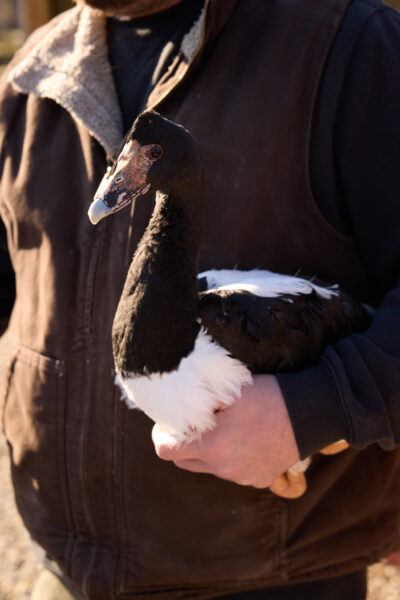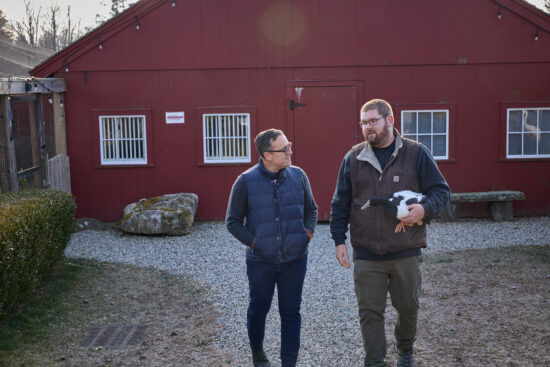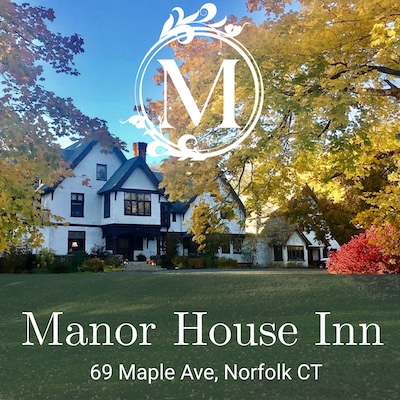January 22, 2024
By Paul Marcarelli
Photographer Ryan Lavine
“A pond with its busy inhabitants
distills a sense of calm and peace
amidst the hurry and bustle
of life outside…” Dillon Ripley, A Paddling of Ducks
Every actor’s resume ends with a list of special skills. Like driving stick shift or juggling knives. I now can add deworming waterfowl to mine after a recent morning spent at Litchfield’s Ripley Waterfowl Conservancy. My goal was to get to know Logan Connor, Ripley’s 26-year-old director of aviculture. But when we’d first met there two weeks earlier, I got the impression he was uncomfortable with the whole magazine thing. We stood quietly watching a raptor demonstration for visitors, in which a Harris’s hawk named Rip launched after a small child running with a morsel of meat behind her on a lure. “Most raptors are loners,” Logan told me. “But Harris’s hawks prefer working together, making them inclined to cooperate with human handlers.”
“So,” I asked Logan, “Are you more of a typical raptor or Harris’s hawk?”
Unlike Rip, Logan wasn’t biting. Clearly, I’d need a different approach. “I grew up on a farm,” I said. “How about I come back and you put me to work?” So it was, I found myself helping administer RWC’s twice annual deworming protocol. Logan, who started at the conservancy as a teen, is a big guy by any standard, and proved every bit as gentle, humble, and unassuming. Reluctant to talk about himself, he’s happy to share his encyclopedic knowledge of RWC’s dozens of species of geese, ducks, cranes, swans, wading birds, and pheasants from all over the world. My particular favorites were the black and white Harlequin duck and the recently-widowed Magpie goose, who I gladly would have taken home. “It’s true geese mate for life,” Logan explained. “For the life of their partner, that is. They seek a new mate when their partner dies. But the Magpie goose, being from Australia, only breeds in warmer climates.”

Unfortunately, a trip to Australia isn’t in the cards for my Magpie goose, nor for Logan who rarely takes a vacation, and in fact lives in a house on conservancy property. But plenty of travel was on the horizon for him, managing a migration via planes, trains, and automobiles for a Whooper swan, a Mandarin duck, and an Andean goose, all headed to new homes around the country. His companions on the return trip would include Ruddy ducks, Superb starlings from Utah, and an intriguingly named Southern screamer from Michigan. Logan also recently returned from presenting a talk in front of some of his heroes at the International Wild Waterfowl Association conservation workshop.
It’s hard to overstate either the significance of the work Logan and his team are doing at Ripley or the reputation RWC has earned for its efforts. RWC works with zoos across the country on a Species Survival Plan which coordinates breeding practices for the entire known population of a species. The fact that this work is being done in our back yard to ensure species survival on a large scale is maybe Ripley’s best kept secret, and something Litchfield County residents should be extremely proud of.

When I asked Logan if he sees himself spending his life at Ripley, his response was an emphatic “Yes!” One of his dreams is to seek out kids that might also see a future for themselves at RWC.
As for me, I see a future for myself with a certain widowed Magpie goose. I’ll have to work on that.
RWC is open for guided tours all winter. Learn more at ripleyconservancy.org.






















